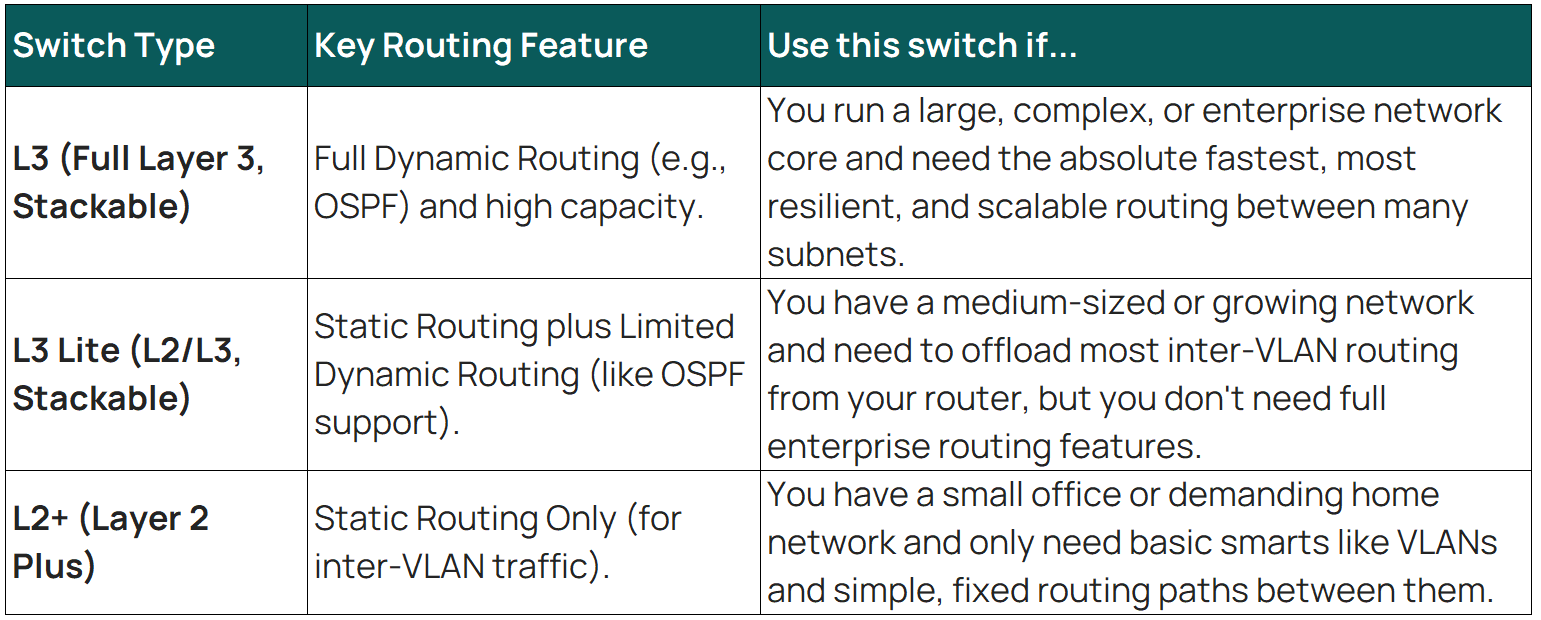Omada Switch Showdown: L3 vs. L2+ - Who's the Boss of Your Network?
Ever feel like the technical jargon of network hardware—like "Layer 3" and "routing protocols"—is just a complicated mess? You're not alone. But think of your business network as a bustling city. For data to get from point A to point B, you need traffic cops (switches) to direct the flow. The thing is, not every intersection needs a full-blown traffic control center! Understanding the difference between L3 (Full Layer 3), L3 Lite, and L2+ switches is simply about knowing how sophisticated your "traffic cop" needs to be to handle the data flow. Let's break down these three core switch types to help you build a network that's just right—no more, no less—for your needs.
The Network Hierarchy: L3 vs. L3 Lite vs. L2+ Switches
Think of these three switch types as having different licenses for directing network traffic, with the core difference being their Layer 3 (IP routing) capabilities.
- L2+ (Layer 2 Plus) Switches: This is your solid foundation. An L2+ switch is a true Layer 2 device, meaning it forwards traffic (frames) using MAC addresses and excels at everything within a single subnet or VLAN. The "Plus" gives it a small taste of Layer 3 via Static Routing, allowing it to forward traffic between local VLANs using pre-defined paths. It's the cost-effective workhorse for the access layer of most small-to-medium networks.
- L3 Lite (Layer 3 Lite or L2/L3) Switches: This is the middle-ground upgrade with stackable ability. An L3 Lite switch does everything an L2+ can, but often has a larger capacity for its routing table and typically supports basic Dynamic Routing protocols like OSPF (though usually with a limited number of routing entries). This makes it smarter than an L2+ but not quite a full router. It's great for taking the inter-VLAN routing load off your router in a medium-sized network's distribution layer.
- L3 (Full Layer 3) Switches: This is the top-tier command center with stackable ability. A full L3 switch offers all the features of the others, plus it supports the full suite of Dynamic Routing protocols like OSPF, advanced features like Multicast Routing (PIM) and Policy Based Routing (PBR). Designed for the core or aggregation layer of large, complex, or enterprise-grade networks, the L3 switch makes the fastest, most flexible routing decisions, ensuring maximum scalability and network resilience.
In short: L2+ is for simple local forwarding; L3 Lite adds basic dynamic smarts; and L3 is for full-scale, high-speed, dynamic routing power across a massive or complex network.








